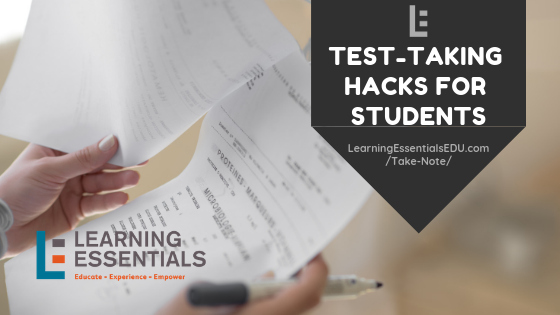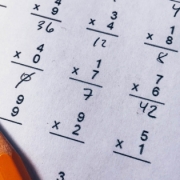Test-taking Hacks for Students
Spring has officially sprung, which means that, unfortunately for students, testing season is about to rear its ugly head. From standardized state tests, to district assessments that measure literacy and math growth, the copious amount of testing on the horizon can leave students thoroughly fatigued. One of the more daunting aspects of an assessment could be the “unknown” factor. Students are left wondering, Did I guess correctly? Was there a chance that I answered the easy ones too quickly? What if my score is terribly low, or lower than last year? As much as we educators and parents would like to ease their concerns, there is little we can do to stomp out those pervasive doubts. We can, however, ensure that students have plenty of test-taking strategies at their disposal so that, even when guessing, they can improve their odds with logic and sound reasoning.
Make a plan of attack
For most, a standardized test means a strictly timed assessment. The projected stopwatch on the board allows students be aware of the time as it expires. However, this countdown can also exacerbate the already stressful environment.
- Help students tackle the time constraint by encouraging them to complete the easiest questions, sections, or passages first.
- Remind them, as they skip through the assessment, to circle or star questions that they have decided to skip; the last thing they want to do is lose points by forgetting to answer questions or entire segments of the test.
- Prompt students to read the questions first, then approach the accompanying passages or texts. This allows students to read with purpose; they know what they need to look for within the text having seen the test questions to come.
- Teach students to budget their time, especially when assessments include essay responses or written components. If the assessment contains an essay at the end, students will want to give themselves enough time to draft an quick outline and then respond to the prompt.
Beat the guessing game
When it comes to guessing, we want to make sure that even the most hesitant students are making educated guesses, as opposed to the “eenie, meenie, miney, mo” method.
- For multiple choice, true/false, matching, or bubble sheet assessments, students should be discouraged from looking for a specific pattern of answers. It is rare that exam answers would follow a predetermined, distinct pattern. As much as it may be comforting or reassuring to come across an answer pattern, blindly adhering to that pattern is ill-advised.
- Eliminate wrong answers to remove distractions, then choose your best guess from the remaining options. If an answer does not make grammatical sense, check with the teacher or instructor before selecting it—it could be a typo, but it could also be a subtle hint that it is not the correct answer.
- If guessing, avoid answers that contain absolute phrases, such as always, never, or none. These phrases are often trick options, meant to make students overthink the question. Words like probably, sometimes, or often are more plausible answers.
- If presented with numeric options for multiple choice answers, and you have no clue how to approach it, choose the mid-range numeral, as opposed to the largest or smallest number.
- If no other strategies apply for multiple choice, and you are forced to guess, choose the answer option with the most detail—those are more often correct.
- Only select “all of the above” if you truly know that all of the above are correct. Do not assume that, if a) and c) are definitely correct, b) should apply as well. Carefully consider whether a) or c) is most appropriate.
When in doubt, if you see two multiple choice answer options that are opposites, such as enigmatic and straightforward, one of those is likely the answer. Students should know to look for antonyms or opposites when guessing on vocabulary questions. They should also be encouraged to examine words and phrases around the term in question to decipher any possible context clues.









